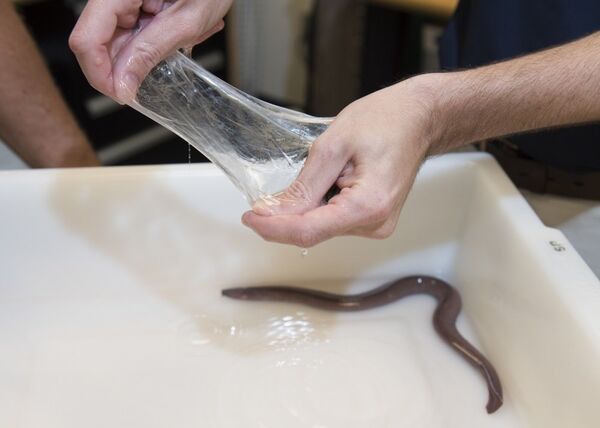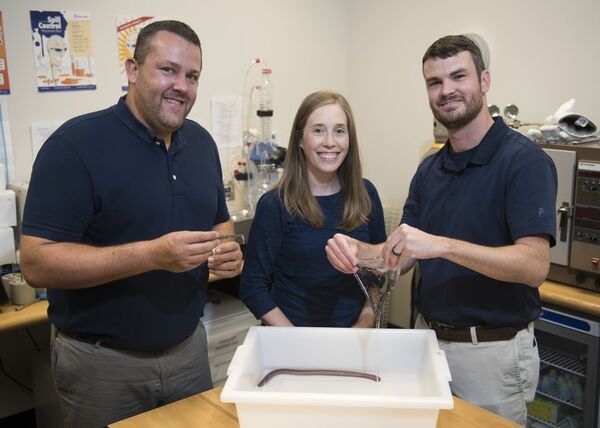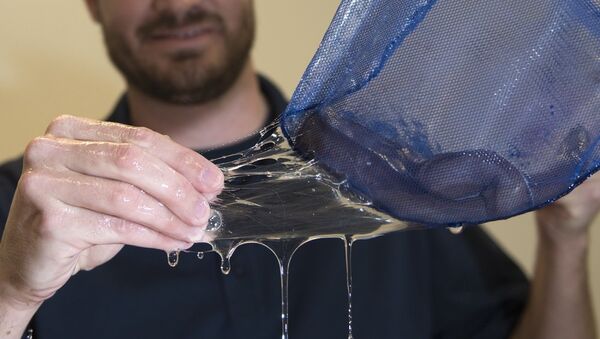Military scientists have succeeded in synthesizing the slime of hagfish, an eel-shaped marine lifeform. When attacked by predators, hagfish emit a viscous substance that seals the gills of an underwater assailant, allowing them to make their escape. The next step is to equip naval forces with the material, which can repel sharks, create ultra-tough wetsuits and even provide ballistics defense.

Hagfish slime consists of two components: proteins and mucin, a gelatinous lubricant. Inside the animal, the threads, a mere 12 nanometers in width but up to 15 centimeters in length, are tightly coiled. When the slime is shot out into seawater, the proteins binding them together dissolve and the threads spring open. This unique mechanism means a small tube of slime could quickly expand into a large underwater defensive shield.
"The coiled up thread behaves like a spring and quickly unravels upon contact with water due to stored energy. The mucin binds to water and constrains the flow between the microchannels created by the thread dispersion. The interaction between the thread, mucin, and seawater creates a three-dimensional, viscoelastic network. Over time, the thread begins to collapse on itself, causing the slime to slowly dissipate. Studies have shown the hagfish secretion can expand up to 10,000 times its initial volume," said military materials engineer Dr. Ryan Kincer of Naval Surface Warfare Center, Panama City Division, in the US.
"Researchers have called the hagfish slime one of the most unique biomaterials known. For the US Navy to have its hands on it would be beneficial. From a tactical standpoint, it would be interesting to have a material that can change the properties of water at dilute concentrations in a matter of seconds."

Hagfish slime has been touted as a new biomaterial for some time, although an effective way of manufacturing it had previously proved elusive. Dr. Kincer and his colleague Josh Kogot, a biochemist, determined a means of recreating the substance via E. coli bacteria, which was engineered to produce two of the proteins normally made by the hagfish — alpha and gamma.
"The synthetic hagfish slime may be used for ballistics protection, firefighting, anti-fouling, diver protection, or anti-shark spray. The possibilities are endless. Our goal is to produce a substance that can act as non-lethal and non-kinetic defense to protect the warfighter," said Mr. Kogot.
Animals are no stranger to war — trained dogs, horses, carrier pigeons and more have been employed in conflicts for centuries. However, militaries have also long-tried to harness the qualities of many less traditional beasts — often to little avail.
In 1942, as America was entering World War II, President Franklin D. Roosevelt was enamored with the idea of strapping bombs to bats and airdropping them onto Axis strongholds. The military duly procured thousands of Mexican free-tailed bats, while Louis Fieser, inventor of napalm, designed one-ounce detonation packs.
Plans stated that a carrier with 26 stacked trays — each containing 40 bats — would be parachuted into the industrial areas of Osaka. The bats would then fly off and roost on buildings, before timers detonated their bombs.
During an initial test run, the bats prematurely sprung loose, roosted under a fuel tank, and incinerated the facility. By the time the plan was improved, the atomic bomb had been finalized — and the rest was history.
Far further back in history, in 266 BCE, the Greek city of Megara fended off Macedonian conqueror Antigonus II Gonatas' fleet of war elephants — the tanks of their day — using flaming pigs. The squeals of the frying porcine divisions was disorientating and distressing to troops and elephants alike, and their heft could be fatal if they hit their intended targets.
However, since the lifespan of flaming pigs is brief, their range was under 400 feet, meaning enemies had to be in extremely close range for them to be effective. A pig has no guidance system either, and would often run back behind their own lines, creating 'friendly' fires in the process.




